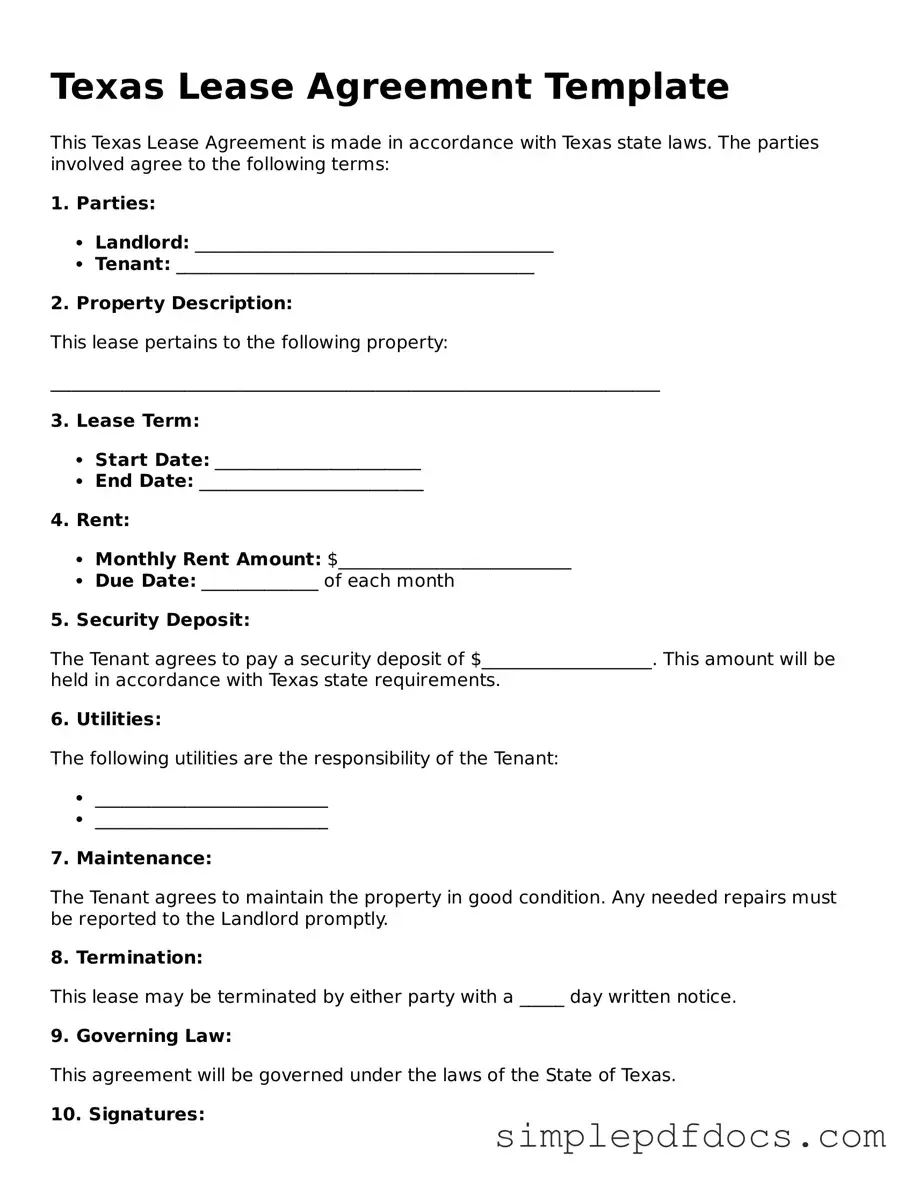Legal Lease Agreement Document for the State of Texas
The Texas Lease Agreement form is a legal document that outlines the terms and conditions under which a landlord rents property to a tenant. This essential agreement protects the rights of both parties while ensuring a clear understanding of their responsibilities. Whether you are a seasoned landlord or a first-time renter, knowing the details of this form can help create a smooth leasing experience.
Get Document Here
